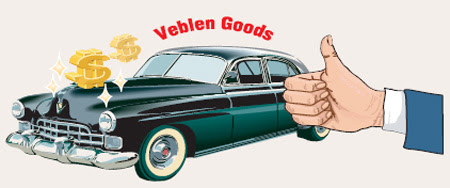Complementary Goods

Definition: Two or more goods that satisfy the wants or needs when consumed jointly or production of one good automatically triggers the production of other good. Satisfaction is greater when both goods are consumed together. (What are Substitute Goods?)
Features of Complement Goods:
•Such goods have negative cross elasticity of demand. They will have a perfectly inelastic demand.
•Goods cannot function without each other.
•Dependent Nature & non-interchangeable
Examples of Complement Goods:
•Car & Petrol/Diesel
•Printers and ink cartridges
•DVD players and DVDs

•Computer hardware and software,
•Flashlight and battery
Giffen Goods
What are Giffen Goods?

A giffen good is an inferior good (a good that people buy more of when their income goes down) with the unique characteristic that an increase in price actually increases the quantity of the good that is demanded. This provides the unusual result of an upward sloping demand curve. The Giffen goods which fail with Law of Demand. Giffen goods are goods that are substitutes for a more expensive good, that people buy more of when they cannot afford a superior good.( Funny example is China made IPhone).
So what is Law of Demand Actually? How Giffen goods fail?
To understand Giffen goods, you must understand both the substitution effect and the income effect.
•Substitution effect: When the price of a good decreases, there is more consumption of this good. This is always positive.
•Income effect: When the price of a good falls, the total expenditure (or portion of your income spent on this good) changes. This can be positive or negative.
A negative income effect will only occur for inferior goods. For a Giffen good, the item is so inferior that if its price falls you will buy less of it (extremely negative income effect) and that if its price rises you will buy more of it (your income falls so you buy more inferior goods).
Veblen Goods

What are Veblen Goods in Economy?
Veblen goods provide the consumer greater satisfaction (or utility) as the price increases. A Veblen good is a good where demand rises as price rises. People think more expensive goods are better quality, and so people buy more. Studies suggest people do get more satisfaction from receiving expensive goods. It is possible that designer clothes or luxury cars may sometimes meet the criteria of Veblen goods. This is often termed the snob effect – people equate price to quantity. They are not inferior goods.

Fine Examples
•Luxury Cars
•Gucci bag
•Expensive Wines
The utility of such goods is associated with their ability to denote status. Decreasing their price decreases the quantity demanded because their status denoting utility becomes compromised.
Substitute Goods:

This means a good's demand is increased when the price of another good is increased. Conversely, the demand for a good is decreased when the price of another good is decreased. That is people search for cheaper alternative. These Goods are in complete Contrast with Complement Goods, Giffen Goods, Veblen Goods (What are Complement Goods, Giffen Goods & Veblen Goods?)
Characteristics of Substitute Goods:
•Born from concept of Competition.
•They can serve the same purpose/use.
•Provide needs in Many Ways to Consumers.
•They provide freedom to choose and pressure goods to supply at reasonable price.
•The increased demand for one of the goods will subsequently cause a decrease in demand for the other. For examples, If X and Y are substitutes if, when the price of X rises, the demand for Y rise.
•They have positive cross elasticity of demand.
Examples of Substitute Goods in Economy:
•Pepsi & Coca Cola Drinks
•Coffee and Tea
Inferior Good: An inferior good means an increase in income causes a fall in demand. It has a negative YED.
Normal Good: This means an increase in income causes an increase in demand. It has a positive YED. Note a normal good can be income elastic or income inelastic.

Luxury Good. A luxury good means an increase in income causes a bigger % increase in demand. It means that the YED is greater than one. For example, high definition TV’s

would be luxury. When income rises, people spend a higher % of their income on the luxury good. (Note: A Luxury good is always a normal good but not vice versa.
Public Goods – goods with characteristics of non-rivalry and non-excludability, e.g. national defence. See: Public goods

Merit Goods. Goods which people may underestimate benefits of. Also often has positive externalities, e.g. education. See: Merit goods
Demerit Goods. Goods where people may underestimate costs of consuming it. Often has negative externalities, e.g. smoking, drugs. See: Demerit goods
Private goods – goods which do have rivalry and excludability. The opposite of a public good See: Private goods

Free Goods – A good with no opportunity cost, e.g. breathing air.
ALL THE BEST..





No comments:
Post a Comment